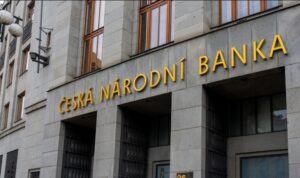Czech National Bank Bitcoin Purchase Marks Central Banking Milestone
The Czech National Bank has become the first central bank to purchase Bitcoin, creating a $1 million test portfolio that includes the leading cryptocurrency. The CNB board approved this purchase on October 30, 2025. This development represents a significant shift in how traditional financial institutions approach digital assets.
The test portfolio comprises Bitcoin, a USD-pegged stablecoin, and a tokenized deposit. These acquired assets sit outside the country’s international reserves. The portfolio structure allows the bank to compare different categories of blockchain-based assets. This composition enables CNB staff to learn about various processes, including settlement, trading, and auditing.
Central Bank Digital Asset Testing Strategy
Governor Aleš Michl first proposed the idea in January 2025 to assess Bitcoin’s potential in diversifying reserves. His original suggestion was to allocate up to 5% of the bank’s €140 billion in foreign exchange reserves to cryptocurrency. The board approved a more conservative approach. The $1 million investment serves as a controlled experiment.
The test portfolio aims to provide practical experience in managing digital assets. It tests the technical, legal, and operational processes involved in holding blockchain-based instruments. The bank plans to evaluate its digital assets after two to three years. This timeline allows sufficient data collection for meaningful analysis.
Bitcoin Reserve Diversification Considerations
Governor Michl emphasized that the goal isn’t speculation or immediate diversification of reserves, but learning. The portfolio sits entirely outside the bank’s foreign reserves and won’t affect its ability to conduct monetary policy. The Czech koruna remains the legal tender. The bank continues its mandate to keep inflation low and the koruna strong.
The initiative aims to gain practical experience with blockchain technologies and related processes. Central banks worldwide watch this experiment closely. The CNB’s approach provides a blueprint for other institutions considering digital assets. While part of the European Union, the Czech Republic has not adopted the euro. This independence allows the CNB more flexibility in its monetary policy decisions.
Central Bank Cryptocurrency Adoption Trends
The announcement reflects growing institutional adoption of digital assets by central banks. The Bank also launched the CNB Lab Innovation Hub, an initiative to test blockchain and other financial technologies. This hub explores applications in commerce and helps adapt monetary policy to technological change.
Taiwan’s People’s Party member Ge Ruchun has called for considering the inclusion of Bitcoin in national strategic reserves. Taiwan’s central bank announced plans to study adding Bitcoin to national reserves and draft supportive regulations. These developments signal broader acceptance of cryptocurrency among sovereign institutions.
The CNB experiment occurs amid shifting regulatory attitudes. The bank began exploring Bitcoin following the pro-crypto regulatory pivot in the United States. Bitcoin’s correlation with traditional asset classes continues to evolve. Central banks need practical experience to understand these dynamics.
The portfolio’s composition lets the bank compare three distinct categories of digital assets. Bitcoin represents decentralized finance. Stablecoins function as private-sector digital cash. Tokenized deposits hint at the future of regulated finance. Each category offers unique insights into blockchain technology’s potential applications.
Conclusion
The Czech National Bank’s Bitcoin purchase establishes a precedent for central bank digital asset exploration. This measured approach balances innovation with institutional responsibility. The experiment provides valuable data for future policy decisions regarding cryptocurrency reserves. Other central banks will likely monitor these results closely before making similar moves.

